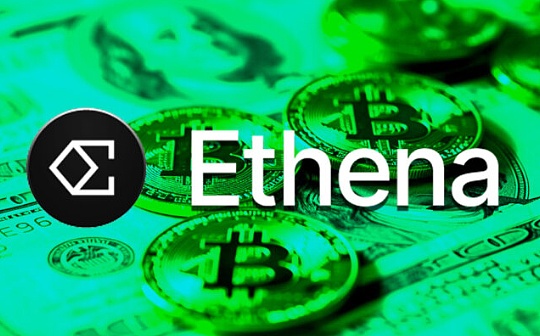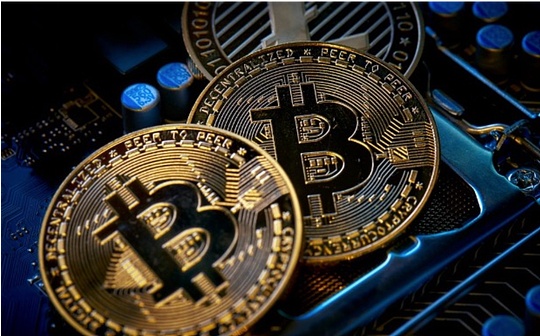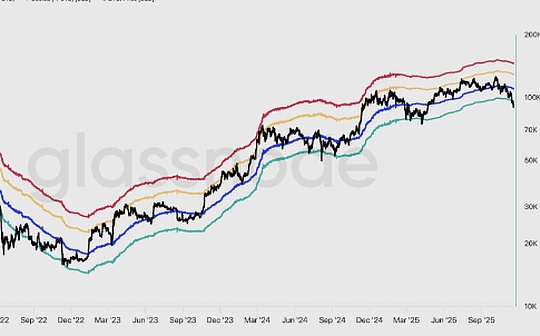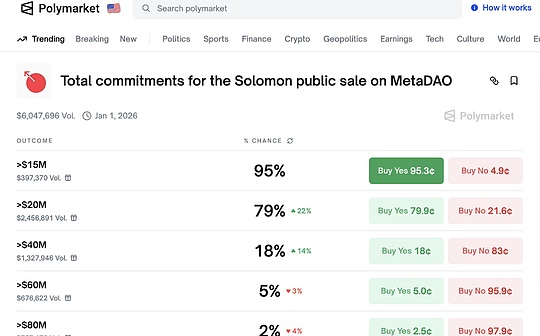
Source: Four Pillars; Compilation: Baishui, Bitchain Vision
summary
-
The SEC is expected to approve spot Ethereum, which could bring up as much as $5 billion inflows in the first six months.
-
The approval of the Ethena ETF may increase the yield of Ethena synthetic dollar sUSDe, just like the yield after approval by the Bitcoin ETF.
-
Ethena’s products pose risks associated with financing rate fluctuations, liquidity challenges, and potential vulnerabilities in smart contracts and custody operations.However, these problems have been solved very well in a transparent way.
-
Ethena plans to enhance the practicality of its ENA tokens and is ready to launch its Ethena Appchain.
2024 is a unique year for the crypto industry.From an institutional perspective, the year began with the approval of the Bitcoin ETF.This allows traditional investors to understand the price trends of Bitcoin through regulated financial products traded on mature stock exchanges without having to directly own or manage cryptocurrencies.This is a factor that brings positive sentiment to the market, leading to the growth of cryptocurrency market capitalization.
When it comes to cryptocurrencies, the trend is to launch its own Rollup and memecoin.Compared to the last bull cycle, there are not many important new primitives built and used by crypto users.However,In the DeFi dapps space, Ethena stands out.Ethena’s synthetic dollar USDe became the fastest crypto dollar to reach $3 billion, surpassing DAI and USDC records.Many factors contributed to this success, including its infrequent architecture, unique business models and sustainable earnings opportunities.
Looking at itCurrently, one of the biggest market focus is the expected Ethereum ETF approval, which is expected to be announced in July this year.The approval of Ethereum ETFs may bring new liquidity to the Ethereum ecosystem, thus bringing other opportunities.The second wave of factors may bring new opportunities to Ethena’s products (USDe, sUSDe and ENA).In this article, let’s explore the current sentiment of Ethereum ETFs and what this means for Ethena.
1. Current status and inflow estimates of Ethereum ETFs
So, what are people’s views on Ethereum at the moment?Until May 2024, there was a lot of doubt and uncertainty about the Ethereum ETF.This uncertainty is triggered by the Securities and Exchange Commission’s (SEC) historically reluctance to approve cryptocurrency ETFs, especially those pegged to altcoins such as Ethereum.As of July 2024, the U.S. Securities and Exchange Commission (SEC) has taken steps to approve spot Ethereum ETFs.Following the approval of Bitcoin Spot ETF earlier this year, the SEC approved the rule change in May 2024 to allow exchanges to list spot Ethereum ETFs.Several asset management companies including BlackRock, Bitwise and Fidelity have submitted applications for these products.Spot ETFs are likely to start trading on July 23.

Source: Ethereum ETF Market Size | Galaxy
1.1 Approved inflow estimates

Source: Galaxy Digital, CoinDesk, Crypto Adventure, CryptoSlate, CoinDesk, Cointelegraph, The Block, Investing.com
It is difficult to estimate Ethereum inflows, as Ethereum ETF market dynamics are affected by factors that differ from Bitcoin, such as a large portion of ETH being locked in staking, bridges and smart contracts, which may amplify the price sensitivity of ETH.As retail investors are more likely to acquire the asset, this demand is expected to drive early inflows, and institutional interest will grow as wealth management platforms become more accessible.However, the lack of pledge rewards may reduce some appeal.
Cryptocurrency Exchange Gemini forecast,Spot Ethereum ETFs could see a net inflow of up to $5 billion in the first six months of trading.On the other hand, JPMorgan analysts’ estimates are more conservative.Net inflows are expected to be $3 billion in 2024.Many analysts use Bitcoin ETF performance as benchmarks.Estimated Bitcoin ETF inflows are between 15% and 50%.Bitcoin ETF attracted a net inflow of $15.1 billion in the first five months of trading.
There is also controversy as to whether the approval of the Ethereum ETF will have the same significant impact on the ETH price as the Bitcoin ETF on BTC.Some analysts believe that the impact may be even weaker due to current market conditions and investor saturation.”The ubiquitous pessimism is a strong foundation for over-performance. The same is true for selling news strategies, which many people will try to copy from BTC ETFs. However, I worry many inflow forecasts may beWill be over-benchmarked by comparison with BTC ETF numbers.”
2. Ethereum ETF is approved to bring opportunities to sUSDe
The approval of spot Ethereum ETFs could make sUSDe an attractive option for investors, similar to the recent Bitcoin ETF approval experience.Additionally, the approval could bring more institutional capital to the Ethereum ecosystem, potentially increasing demand for USD-denominated earning assets such as sUSDe.As a synthetic dollar that offers high yields, sUSDe could be an attractive option for investors looking to maintain dollar exposure while benefiting from the growth of the Ethereum market.
As a supplementary investment strategy for Ethereum ETF exposure, sUSDe can be a good choice.Let’s first look at what happened during the last Bitcoin ETF approval period and look at how sUSDe yields work and potential factors.
2.1 Review the time when Bitcoin ETF was approved
The approval of Bitcoin ETF has had a profound impact on the market, pushing up prices and increasing financing rates.As more and more traders hold long positions, expected prices rise, and financing rates (i.e. regular payments between long positions and short positions in the futures market) rise sharply.These interest rates are affected by the supply and demand dynamics of underlying assets.
Financing rates were relatively stable, hovering around 10% before the ETF was approved.However, after approval, these rates soared sharply, with an annualized rate of up to 50%.Similarly, the approval of the Ethereum ETF could push up financing rates for ETH perpetual futures, benefiting sUSDe holders, as the token’s revenue comes in part from these financing rates.
In addition, since the approval, the price of Bitcoin has also risen.This chart shows the correlation between Bitcoin price and annualized financing yields for perpetual futures contracts from July 2023 to July 2024.Data shows that after the ETF was approved, Bitcoin’s price and financing interest rates rose sharply.The SEC approved the Bitcoin ETF on January 10, 2024, causing a sharp surge in Bitcoin price, climbing from about $40,000 to nearly $80,000 in a few months.

After the Bitcoin ETF was approved, assets denominated in USD (such as Ethena USDe) rose to fame.These assets provide stability and attractive returns, making them the ideal collateral for DeFi platforms.For example, sUSDe’s yield soared to more than 30% after the ETF was approved, highlighting its growing appeal among investors seeking stable and high-yield assets.Let’s look at how this rate of return works and what are the potential factors that may affect the rate of return.

2.2 Potential Impact on sUSDe Rate of Return
Ethena’s synthetic dollar token, USDe, has become a particularly attractive option after the Bitcoin ETF was approved.By leveraging increased market activity and higher financing rates, USDe is able to generate up to 30% of returns upon approval of ETFs.This impressive return is achieved through a variety of strategies, including delta hedging of pledged Ethereum collateral and exploiting the widening spread between spot and futures markets through its basis arbitrage.Let’s see how it works and why Ethereum ETFs can impact this gain.
2.2.1 How the benefits of sUSDe are generated

Source: Yield Explanation | Ethena Labs
The revenue mechanism of sUSDe (Staked USDe) in the Ethena protocol operates through the “Token Vault” system with rewards, similar to other staked tokens such as Rocketpool’s rETH.When users pledge their USDe, they receive sUSDe tokens that represent a portion of the interest in the total USDe held in the stake contract.
The agreement generates benefits from two main sources:Pledge rewards for holding assets such as stETH as collateral, as well as funds and basis obtained from delta hedge derivative positions.This gain is then distributed to the sUSDe holders by the value of sUSDe relative to USDe over time.Importantly, the agreement ensures that the value of sUSDe can only increase or remain stable, and that any potential losses are borne by Ethena’s insurance fund.(However, the coverage rate of insurance funds is currently only around 1%.) Users can gain without taking any additional actions; simply holding sUSDe can benefit from the returns generated by the agreement.
2.2.2 Ethereum ETF and sUSDe rate of return
One of the key factors driving the rise of sUSDe’s yield is the sustainability of base rates and financing rates in the perpetual futures market.With the approval of Ethereum ETFs, people expect demand for perpetual contracts to increase, as institutional investors may seek to invest in Ethereum through various financial instruments.This increase in demand could lead to an ongoing positive financing rate environment that benefits sUSDe holders who may gain additional benefits from these financing payments.

As more spot trading volumes shift to regulated ETFs, lagging spot demand on offshore exchanges could create interesting arbitrage opportunities.This situation may lead to a continuous basis between spot and futures prices, which traders can take advantage of and may bring higher returns to sUSDe holders.In addition, positive sentiment after ETF approval may push up financing rates and further increase the earning potential of sUSDe.Historical data shows that financing interest rates tend to rise during periods of positive sentiment.
However, it should be noted that market dynamics can be complex and unpredictable, and actual results may vary by several factors.

Source: Ethereum: Financing Rates – All Exchanges | CryptoQuant
3. Risks of using and sUEDE
Ethena grew in a short period of time, surpassing previous records for other cryptocurrencies.It was the fastest cryptocurrency to reach $3 billion, in just about 200 days.This raises the question: Will this growth continue?What are the risks?In this section, let’s take a look at some of these risks.
3.1 Funding rate and liquidity risk

Source: App | Ethena
Ethena faces risks associated with financing rates and liquidity.If there are more short positions than long positions, the financing rate may become negative, resulting in a contract loss.If the financing rate becomes negative, the agreement will require a large amount of payment to long positions, which may exhaust the reserve fund (insurance fund).According to Ethena’s research, the total yield on stETH and short ETH financing was positive on 89% days but negative on 11% days.
As USDe’s market cap grows too much, this situation may become more difficult to manage, making it difficult to maintain its delta neutral position and leverage the reserve fund.also,If the liquidity in the basic derivatives market is insufficient, liquidity risks will arise.This may affect USDe’s stability and total revenue allocated to the stakeholder.For example, if liquidity on centralized exchanges declines during market downturns, Ethena may have difficulty rebalancing its positions.
3.2 Hosting and smart contract risks

Source: Solution: Internet Bonds | Ethena Labs
Ethena also faces custody and smart contract risks.The protocol relies on external platforms such as centralized exchanges and off-site settlement (OES) providers, which poses potential risks stemming from their operations or security breaches.If these platforms face bankruptcy or operational issues, it can affect Ethena’s ability to execute transactions and maintain its delta neutral position.However, if the centralized exchange goes bankrupt, Ethena’s permanent positions will be closed, but the collateral assets themselves should be safe because they are not on the exchange from the beginning.
Additionally, smart contract vulnerabilities or errors can lead to unexpected consequences or be exploited.While Ethena has implemented measures to mitigate these risks, such as the use of multiple providers and proactive monitoring, they remain a significant problem.
3.3 Risks about Ethena
As Conor Ryder, Ethena research director, said, there are potential risks for Ethena, but it is one of the projects that have been researched publicly and has built a real-time dashboard to reveal the status of Ethena.
Accessed on the Ethena website and other platforms such as Dune Analytics and DefiLlama, these dashboards provide real-time information on custodial wallet holdings, exchange sub-account positions, on-chain wallet assets, USDe supplies, and USDe and sUSDe and key metrics.The position dashboard displays detailed information about collateral assets, derivative positions used for delta hedging, and USDe circulation.(Some information is not accessible on other platforms.)
“To be clear, USDe is not safer or better than any other project – we just offer risk profiles that are not related to other DeFi,” said Conor Ryder, director of research at Ethena.
4. $ENA, the behind-the-scenes driver of USDe
Ethena launched its governance token ENA on April 2, 2024.The launch of ENA token marks a milestone for Ethena toward decentralization and community governance.As part of the release, Ethena distributed 750 million ENA tokens to early ecosystem contributors and its “Shard Campaign” participants, accounting for 5% of the total supply of 15 billion.
Ethena is now motivating participants to participate in the Ethena ecosystem.It had previously launched its Season 1 “Shards” campaign in early April 2024 for the launch of the ENA Token.Ethena is currently in Season 2 “Sats” event, which will end on September 2, 2024.This activity incentivizes participants to earn Sats through strategies involving Pendle and Morpho, with a total token allocation commitment of 15-20% across all points activities.
ENA’s token economics is designed to balance incentivize contributors and maintain an active ecosystem.Core contributors hold 30% of the token allocation, investors hold 25%, Ethena Foundation holds 15%, and the remaining 30% is used for ecosystem development, including airdrops and new project financing.

Source: ENA Token Release — Ethena Labs
Like many application tokens, $ENA is the governance token of the Ethena protocol, allowing holders to make decisions on a variety of matters, including decisions on USDe collateral assets (modification or addition), decisions about custodial entities (OES providers)., cross-chain implementation, authorization, which exchanges to use, and the risk management framework to choose.
However, the current ENA tokens do not have much practicality at the moment.Although Ethena’s TVL has grown rapidly and has become one of the top projects that generate a lot of revenue, it is not currently shared with token holders.
This will change a lot in the upcoming Ethena development.Ethena won’t be just another DeFi project.It has a roadmap that will make $ENA more opportunistic, two opportunities that are potential revenue sharing and Ethena Appchain.
4.1 Potential revenue sharing

Source: Token Terminal [Date: Week starting Monday, May 27, 2024]
Ethena’s revenue grew significantly, with its synthetic USD USDe becoming the fourth largest stablecoin by market capitalization.Here are some key points about Ethena’s revenue growth:
-
Leading revenue:In the last week of May, Ethena’s USDe generated $7 million in revenue, surpassing Solana’s $6.3 million.Only Tron and Ethereum have outpaid DApp revenues.
-
Market value:USDe has a market capitalization of more than $3 billion, making it the fastest growing crypto dollar asset in crypto history.
-
Income forecast:According to Token Terminal, Ethena is expected to generate an astonishing $222.5 million in revenue over the next 12 months.
Since the ENA token is the governance token of the Ethena protocol, token holders may have the opportunity to vote on proposals that may include an income distribution mechanism.This may allow ENA holders to influence decisions on how the agreement’s income is distributed, which may include returning part of the proceeds generated by USDe staking or other protocol activities to token holders.
4.2 ENA application chain and restaking
Recently, Ethena announced an update to the ENA token roadmap and introduced new initiatives to the ENA token economics.Ethena is introducing staking for ENA, which will provide security for cross-chain transfers and integrate ENA into its financial infrastructure, including the upcoming Ethena Appchain.Additionally, a new requirement requires users to lock in at least 50% of claimable tokens to incentivize long-term cooperation among ENA holders.This move is part of a broader strategy to ensure the stability and growth of the ecosystem.

Source: $ENA Token Economics Update — Ethena Labs
This protocol introduces universal restaking of ENA and may provide rewards for ENA restaking pools within Symbiotic.The introduction of a universal restaking pool marks an expansion of ENA’s utility.These pools will use the LayerZero DVN messaging system to provide economic security for USDe’s cross-chain transfer.The program is part of a broader development of Ethena Appchain, aiming to build financial applications and infrastructure using USDe as a major asset.ENAs staked in these pools will receive various rewards including high multiplier, Symbiotic points and potential future allocations from LayerZero.
Looking ahead, the practicality of ENA will be greatly expanded.The Ethena Roadmap outlines plans for integrating ENA into a variety of financial applications and infrastructure solutions on Ethena Appchain.These include spot DEX, permanent decentralized exchanges, earnings trading platforms, money markets and low-collateral lending agreements.Additionally, ENA can play a role in major on-chain brokerage services, options and structured products.Such a wide range of applications will not only enhance the practicality of ENA, but will also drive its needs as the ecosystem develops.
5. Looking to the future

Source: X (@leptokurtic_)
The approval of the Ethereum ETF marks a critical moment in the cryptocurrency market, similar to the impact of Bitcoin ETFs earlier this year.This development is expected to bring a lot of liquidity and institutional interest to Ethereum, which could affect prices and markets.Ethena has synthetic USD USDe and earnings token sUSDe, and is in a good position to benefit from these changes.The potential for increased demand for ETH-related financial instruments may drive positive financing rates and create arbitrage opportunities, thus bringing higher returns for sUSDe holders.This growth came after the Bitcoin ETF was approved.
However, it is crucial to recognize the inherent risks posed by such rapid growth and market changes.Ethena must address challenges related to financing rate volatility, liquidity management, and custody and smart contract vulnerabilities.Despite these risks, the platform’s transparent approach to risk management and proactive measures such as real-time dashboards and diversified provider use have brought it a certain level of confidence.
USDe has been growing exponentially since its inception, becoming the fastest cryptocurrency with a market capitalization of $3 billion.With the approval of the Ethereum ETF, Ethena is expected to grow further.In addition, the practicality of ENA will be expanded soon through initiatives such as revenue sharing and Ethena Appchain, which may provide additional value and stability.Therefore, it is important to keep an eye on opportunities.
Appendix A: Ethereum ETF main timeline
A.1 January 2024: Bitcoin ETF paves the way
In January 2024, the spot Bitcoin ETF was approved, an important milestone that paved the way for altcoin ETFs and Ethereum will become the next possible candidate.The success of Bitcoin ETFs has brought about unprecedented net inflows, consolidating BTC’s position as a legal investment asset.The launch of these Bitcoin tracking funds proved to be one of the biggest debuts in ETF history.According to Morningstar Direct, it translates into a net inflow of $8 billion.As of the end of June, the nine newly launched products had amassed $38 billion in assets, a testament to investors’ strong interest in investing in cryptocurrencies through traditional financial instruments.

Source: Bitcoin ETF Traffic – Farside Investors
A.2 May 2024: Ethereum ETF has strong momentum
In May 2024, the U.S. Securities and Exchange Commission (USEC) made a major rule change, approving applications for listing Ethereum spot ETFs on major exchanges.The decision allowed the Nasdaq, the New York Stock Exchange and the Chicago Options Exchange (Cboe) to list 8 Ethereum ETFs.After the applicant revised his application documents to meet regulatory preferences, the SEC approved, in particular, the removal of Ethereum staking from ETF fund operations, which was seen as a potential barrier to approval.
The change of rules requires ETF issuers to update their Form 19b-4, which is used to propose new rules or changes to existing rules for self-regulatory organizations such as stock exchanges.While the SEC approved these forms of eight Ethereum spot ETFs, including those of Bitwise, BlackRock and VanEck, issuers still need to obtain approval from their respective S-1 registration statements before they can officially begin trading.
A.3 June 2024: Expectations and Delays
2024 年 6 月,人们对以太坊 ETF 获批的预期持续升温。SEC 主席 Gary Gensler 表示,审批过程进展顺利,一些分析师预测最早将于 7 月 4 日推出。然而,SEC 推迟了现货以太坊 ETF 的推出,将时间推迟到 7 月中旬或更晚。
A.4 July 2024: Delay and uncertainty
到 2024 年 7 月,以太坊 ETF 批准的延迟导致投资者产生不确定性。尽管一些分析师预测该产品将在未来两周内推出,但市场仍保持谨慎。Bitwise 提交了一份修改后的 S-1 表格,表明该产品已接近上市准备就绪,但美国证券交易委员会的评论将时间表进一步推迟。市场情绪喜忧参半,一些分析师预测,如果 ETF 没有产生大量资金流入,ETH 的价格可能会下跌。
A.5 Mid-July 2024: Confirmation is coming
There are reports that spot Ethereum ETFs may start trading as early as next week.According to people familiar with the matter, the U.S. Securities and Exchange Commission has notified ETH exchange-traded fund issuers that their funds can begin trading on July 23, 2024.The SEC reportedly has no further comments on the recently submitted Form S-1 and requests that the final version be submitted by Wednesday, July 17.The market’s response reflects growing optimism about the potential impact of these new financial products on the broader cryptocurrency ecosystem.








